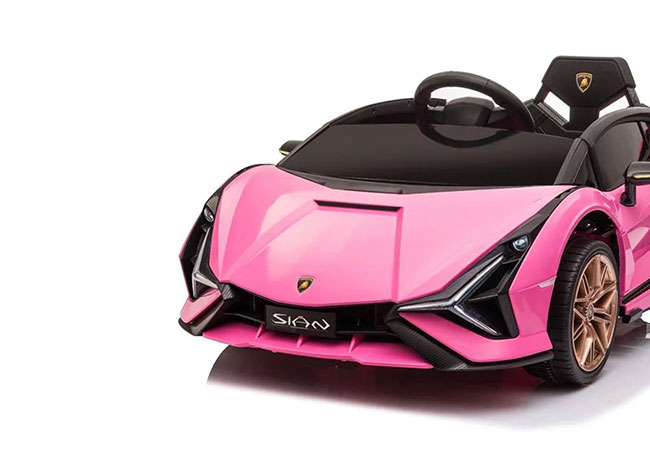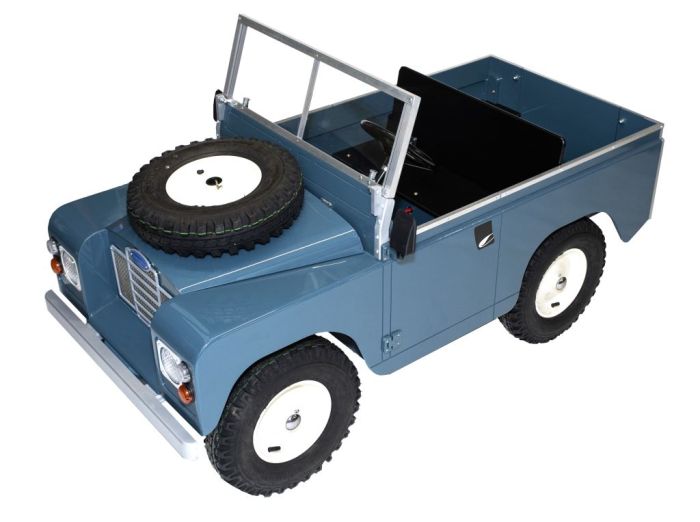Great Facts For Selecting Ride On Toys
Great Facts For Selecting Ride On Toys
Blog Article
What Safety Features On The Ride-On Should I Look At? Pros And Pros And
The safety features in a child's ride-on car are essential to their enjoyment. Seat Belts, for example are a security measure which is essential to think about.
Pros: Seat belts protect your child from the ride-on vehicle, reducing the possibility of them falling off or being ejected during play. Seat belts provide an additional layer of protection for your child during turns and sudden stops.
Cons - Certain ride-on vehicles particularly those designed for toddlers, may not include seat belts. Kids may be able to find seat belts restrict or uncomfortable which can cause them to reject or resist using them.
Sturdy Construction -
Pros: A sturdy ride-on vehicle with high-quality components will last for longer and is less likely to fail. This ensures safety and reliability. It can withstand the demands of playtime and also provides stability when used.
Cons - The cost of a solid structure can be costly, making them prohibitive for many families. Ride-on vehicles may be more difficult to maneuver and transport in the event that they are constructed from heavier materials.
The Low Center of Gravity
Ride-on cars with low center of gravity tend to be less likely to topple, which can lower the risk of injuries and accidents. They offer greater stability and balance during maneuvers or turns.
Cons – Some ride-on vehicles that have a lower center of gravity sacrifice the ability to drive off-road and ground clearance that can limit their flexibility.
Parental Remote Control -
Pros – Remote-controlled ride on cars allow parents to supervise, help and monitor their child’s play. They provide an added level of safety and parental control. Parents can intervene to prevent accidents, navigate difficult terrain, and assist their child in the event of a crisis.
Cons: Controlling parents using a remote may limit autonomy and independence in children, as they rely on parental help and guidance when playing. Furthermore, the cost of ride-on vehicles controlled by remotes could be higher than of manual ones.
Speed Limiters
Pros – Ride-on cars that have speed limiters or adjustable speeds permit parents to limit the speed at which they can drive and lower the chance of accidents or collisions. Parents can raise the speed of the ride-on car as their child gets more proficient and confident.
Cons - Some children get bored with lower speed settings that can result in frustration and dissatisfaction. In addition, the speed limiter may not be present on all models. Also, it could require an additional feature or an accessory.
Safe Start Technology -
Pros - Safe Start technology ensures that the ride-on automobile can stop and start without a hitch, eliminating the danger of lurches or sudden jerks that can frighten or even destabilize the child. This ensures a safer and more comfortable ride.
Cons: Ride-on cars equipped with safety start could cost more than standard models. Some kids find the gradual acceleration of deceleration to be less appealing than immediate stops and stops.
Visibility Enhancements
Pros: Ride on cars with visibility enhancements such as functioning taillights or headlights as well as reflective materials improve visibility, particularly in dimly-lit locations or with low light conditions. They improve safety as they allow the vehicle to be seen to other vehicles or pedestrians.
Cons: Visibility improvements may drain the battery more quickly or increase the complexity of the design of the ride-on vehicle, increasing the risk of malfunctions or maintenance issues.
When you consider these safety features and weigh their benefits, you'll be able choose an automobile that will prioritize the safety of your child and also providing them with the most enjoyable and thrilling playing experience. Check out the top remote control childrens cars for website tips including 2 seater electric cars, race car toy, two seater childrens electric cars, electric ride along car, remote control childrens car, toy car toy car, childs ride on car, electric toy car, toy and car, toy ride and more. . 
What Are The Various Skill Levels That Electric Ride-On Cars Cater For?
Children can enjoy a fun and safe ride on electric ride-on vehicles with numerous speed and control options. These features are designed to enhance safety and pleasure.
Different children have varying levels of proficiency and confidence in regards to riding ride-ons. With a variety of speed settings parents can adjust the vehicle's maximum speed in accordance with the child's capabilities and decrease the risk of accidents.
Beginners or younger children still learning how to drive the ride-on vehicles will benefit from lower speed settings as older children and those who have more experience can use more speed settings.
Gradual Learning Curve -
The electric ride-on car that has the ability to adjust its speed allows children to develop their driving skills slowly. Beginning drivers can gain confidence and get comfortable with the controls, by starting at lower speeds.
As children gain driving skills, parents can increase the speed. This will give the child a sense of progress and achievement.
Parents Control Parents Control
Some electric ride-on cars come equipped with parental control options that allow parents to limit the maximum speed of their vehicle remotely. This feature gives parents security knowing they can alter or control the speed as needed to ensure their child's safety.
Model-specific parental controls may include remote speed limitation and emergency stop buttons for remotes, and remote steering.
Adaptability
Children's interests and skills are able to change as they grow and grow. Electric ride-ons that have multiple speeds are able and adaptable to the changes.
Children can speed up as they gain experience and confidence. This will make for an exciting and challenging experience. Parents can also reduce the speed to accommodate younger siblings as well as their companions.
Customization
Multi-speed settings permit customization of the riding experiences according to personal preferences. Children can select the speed that best suits their comfort and level of excitement.
Some electric vehicles have additional controls, such as variable braking and acceleration sensitivity. These options permit finer control of driving in accordance with particular needs.
Overall, electric ride-on cars with multiple control options and speeds provide an enjoyable, safe, and flexible experience for children. It is the same regardless of age, abilities or personal preferences. These features boost confidence, encourage the development of skills and offer fun experiences for kids while giving parents the ability to supervise and assist their child if needed. Read the best click here on Audi kids car for blog recommendations including electric ride along car, ride electric car, toy car for car, electric ride on cars, 2 seater electric cars, race car toy, pedal car, childrens electric ride on, ride electric car, remote control childrens electric cars and more. . 
What Can I Do To Learn What Parents Have To Say About Specific Ride-On Models?
To find reviews and recommendations on specific models of ride-on cars it is possible to use a variety of online resources and platforms. Here are a few tips to assist you in researching and analyze models of ride-on cars Online Retailers
Shop online at Amazon, Walmart and Target where customers leave reviews on the items they purchased. Search for models that ride on cars with lots of reviews and ratings that are positive.
Manufacturer Websites -
Visit the official websites of ride-on car manufacturers to learn about their products, features and customer feedback. On some sites manufacturers will have customer testimonials or reviews.
Forums and Communities - Parenting
Join parenting forums and learn from other parents and their experiences. There are also online communities where people share their recommendations and opinions about ride-on vehicles. Reddit BabyCenter as well as The Bump are all websites with parenting forums on which you can read other people's experiences and get answers to your questions.
Toy Review Websites
Explore websites and blogs dedicated to reviewing toys for children and ride-ons. These websites offer detailed review and comparisons that are based on factors such as the durability, safety and playability.
YouTube Reviews -
YouTube is where you will find ride-on reviews. Toy enthusiasts as well as creators of content share videos of reviews and demonstrations. The video reviews you watch will give you a clear picture of the ride-on vehicles' performance in real-life scenarios.
Social Media Social Media
Follow toy makers, parenting influencers, and parenting groups on social media platforms like Facebook, Instagram, and Twitter. These platforms typically contain product reviews and user testimonials along with recommendations from other parents.
Consumer Reports and Product Testing Organizations
Consumer Reports and other product testing groups such as Which? or Good Housekeeping offer impartial opinions on the ride-on cars. They conduct rigorous tests and reviews to evaluate the performance and quality of the product.
Word of mouth
Ask for recommendations from friends, relatives, or parents who have experience with certain ride-on models. The recommendations of family and friends can offer valuable insight and firsthand accounts about product performance and satisfaction.
When looking for ride-ons be sure to consider factors such as safety, durability, the ease to put together, battery life, and the support provided by the manufacturer. It is important to choose brands with a reputation for reliability and quality. This can be established by reviews from parents and other consumers. See the top ride on toys kidscars.co.uk tips for blog examples including toy ride, lambo toy car, childs electric ride on car, kidscars, 2 seater electric cars, car toy toy, toy car for car, toy ride, car toy car toy, childs car toy and more. .